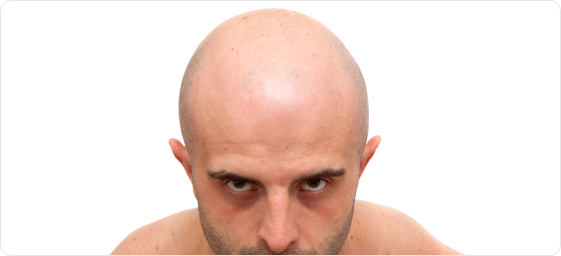Hair transplant
Hair is the symbol of youth, vitality and beauty for most people. More than 10% of male population faces hair loss already in their twenties, which can lead to loss of self-confidence, and during the years with the hair falling out, it can even lead to frustration and serious psychological traumas. Almost two thirds of male population worldwide is genetically predetermined to lose hair. The major part is referring to men above the age of 45.

How is hair transplant done?
The most popular method for hair transplantation is the FUE (follicular unit extraction) method. This method is recommended as the most noninvasive method giving excellent results.
Hair for transplantation is harvested in the area of the head where the hair is thick enough (back part of the head as well as left and right side). FUE method places hair transplant grafts one by one to the area where the loss of hair is present. This procedure is done with specially designed microsurgical instruments, enabling us to take and place each follicle individually.
Such procedure allows us to keep the difference between the old and the new, transplanted hair, invisible and it results in completely natural appearance of the transplanted hair. The procedure is completely painless and is done under local anesthesia, and the patient can return to his daily routine immediately after the procedure. Hair growth will be visible in at least 16 weeks, and once transplanted hair will grow normally until the end of your life.
FUE method enables excellent control of each step of the procedure and can be applied for men and women equally, as well as for all hair types. FUE method is excellent for eyebrow loss reconstruction.

What happens before a hair transplant procedure?
You will be informed about the procedure itself during extensive consultation with the doctor. You should stop using vitamin E, or any other vitamins, at least 3 weeks before the procedure. You should stop using any non-steroidal drugs at least a week before the procedure, as well as consumption of alcohol in any form. We recommend taking Regainea/Minoxidila 2 to 10 weeks before the procedure, in order to improve circulation in the region of hair transplantation. This will prevent loss of hair immediately after the procedure, due to a shock.
At the day of the procedure, the breakfast is obligatory for all patients, but not containing eggs and dairy.
What happens after a hair transplant procedure?
After the procedure you can leave the clinic, accompanied by a friend or a family member, and return to your daily routine. We recommend to spend the rest of the day resting, without major stress, that would cause sweating. You should be on a light diet a few days after the procedure and you should avoid alcohol. Use of any type of drugs is allowed only after consultation with your doctor. You must avoid scratching the scalp a few days after the procedure, because of a possible infection. You should avoid physical stress and exercise at least for 14 days after the procedure, as well as exposure to any external heat source (sun, sauna, solarium).
It is very IMPORTANT not to use chemically active substances like hair dye, hairspray, hair gel or similar for at least a month after the procedure.
All other important information on washing and maintenance of the scalp will be given to you by the doctor in written, after the procedure.

What are the results of a hair transplant?
Results may vary depending on the stage of hair loss and the number of transplanted follicles. The real success appraisal can be done only after 8 months, when the transplanted hair starts to grow normally. 90% of the hair growth is generally achieved after 12 months.
What are the risks of a hair transplant?
As with any procedure, there are certain risks. You will be informed on all possible risks of this procedure during consultation with your doctor.
- Surgery duration: - sati
- Hospitalization: 0 days
- Check up and release: - days
- Note:














